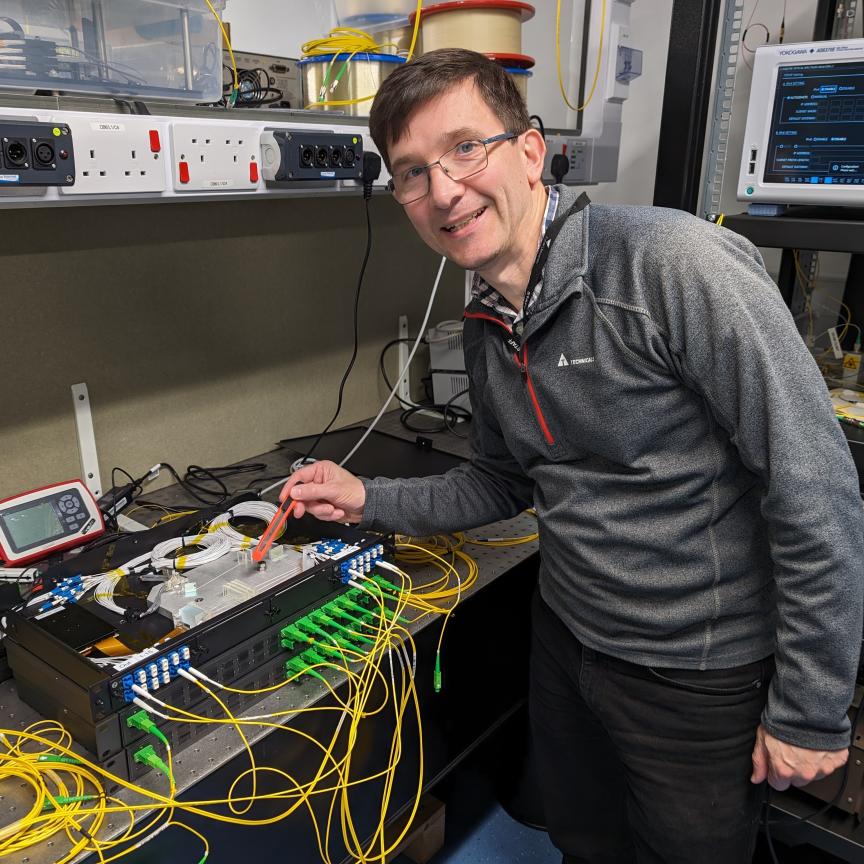In today’s communication networks the pursuit of efficiency, speed, and cost-per-bit reduction is arguably the network operator’s holy grail. Digital signal processing (DSP) technology, which shapes network capabilities, is becoming ever-more important to this evolution.
Coherent DSPs in particular play a crucial role in optimising this process by enhancing the coherent detection technique. Coherent detection involves encoding data onto optical carriers and using both the amplitude and phase information of the received signal for accurate detection. Coherent DSPs process these complex signals, compensating for various impairments that occur during transmission, such as dispersion and nonlinearities.
One of the key advantages of coherent DSPs is their ability to implement advanced modulation formats, such as quadrature amplitude modulation (QAM). This allows for the packing of more data onto each optical carrier, effectively increasing the data rate without the need for additional spectral resources. They can adaptively adjust the modulation formats based on channel conditions, providing flexibility and optimising the network's capacity use.
In addition to maximising data rates, coherent DSPs can enable greater reach in optical networks. They can mitigate signal degradation caused by chromatic dispersion, which occurs as light pulses spread out and overlap over long distances. By employing sophisticated algorithms, coherent DSPs can reverse the effects of dispersion, enabling data to travel farther without significant quality loss.
Furthermore, coherent DSPs facilitate the implementation of powerful error correction codes. Forward error correction (FEC) is a vital technique used in optical networks to counteract signal impairments and minimise errors. Coherent DSPs can enhance the efficiency of FEC algorithms, allowing for more robust error correction and enabling reliable data transmission even in the presence of noise and interference. This is particularly important for applications that demand high levels of data integrity.
Network applications opportunities for coherent DSPs
The evolution of coherent DSPs has opened up a wider range of applications over the years, and next-generation of this technology can now be used in almost any type of network, from core networks, to metro and data centre interconnect. Muhammad Sarwar, Distinguished Global Solution Planner at Fujitsu explains: “This new generation of DSPs can target network applications so broadly, so more than 90% of network links or applications could be supported at an 800G rate. This generation of DSPs and products enables network operators to double the capacity previously used in core optical networks while reducing power and equipment footprint by up to 50% each.”
In terms of the benefits this can bring to operators of these networks, one of the greatest is in helping to overcome the challenge of scaling networks to meet the ever-increasing bandwidth demand, while also managing to keep the cost-per-bit low. But next-generation DSPs can also address more emerging challenges relating to environmental, social, and governance (ESG) commitments. Says Sarwar: “Yes, the top challenge is to scale the network for growth, while reducing the cost per bit, but the second challenge is the sustainability challenge. If an operator can increase the network’s capacity, they want to avoid doing so if it causes a reduction in power efficiency.”
The latest generation of coherent DSPs, many of which were launched in the lead-up to or during OFC 2023, are set to make their way into optical communications networks this year. What’s different about the newest iterations is that they are based on advanced 5nm complementary metal-oxide semiconductors (CMOS), which helps to address the power consumption challenge. Sarwar explains: “These new DSPs are using a new CMOS technology, moving from 7nm to 5nm process, which provides almost a 30% reduction in power just from a DSP perspective.”
Sawar says that the latest generation of coherent DSPs such as those used in its 1FINITY Ultra Optical System T900 liquid cooled transponder, can address the need for cost-per-bit reduction. “T900 reduced the cost-per-bit by 50% by reducing the number of transponders network operators need to deploy. They were previously deploying 64 transponders to fill the C- band. Now they need only 32 that are operating at double the rate.”
Power savings provide operators with sustainability benefits
Fujitsu has also gone a step further to help operators reduce power consumption, including the addition of liquid cooling to the optical transport platform. Says Sawar: “Certain DSP functions like FEC, consume a lot of power within the DSP, it is very important that they don't linearly increase in power consumption as they support higher data rates, for example, we have some innovations built into the DSP that can keep the power consumption the same for those high power consuming algorithms, even if the capacity is doubled from 400G to 800G, or 1.2T.
“Once we packaged the DSP in the transponder system, we used a new type of cooling mechanism to further reduce the power consumption. For example, Fujitsu's latest T900 transponder, which uses this DSP is liquid cooled for more efficient thermal management than air-cooled systems and provides power reduction. The idea is to address sustainability at every level, starting from the DSP CMOS process, algorithms within the DSP along with how it is packaged in a compact modular transponder blade, as a result, we're seeing a 50% power reduction in our transponder design using 5nm DSPs by combining those power efficiencies.”
Another important issue that the latest coherent DSPs can address for operators is bringing new automation capabilities into their operational paradigm. “Our customers need automation in their networks to simplify the scaling process. So, if new DSPs can help simplify their operational model by providing deeper insights into optical networks, it will be a major operational benefit for their business.”



